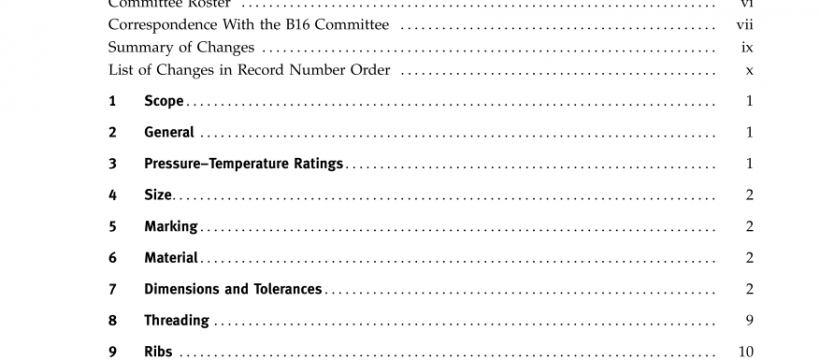ASME B16.4:2016 pdf free download
ASME B16.4:2016 pdf free download.Gray Iron Threaded Fittings
4.1 Nominal
Pipe Size As applied in this Standard, the use of the phrase “nominal pipe size” or the designation NPS followed by a dimensionless number is for the purpose of identi- fying the end connection of fittings. The number is not necessarily the same as the fitting inside diameter.
4.2 Reducing Fittings
For reducing tees and crosses, the size of the largest run opening shall be given first, followed by the size of the opening at the opposite end of the run. Where the fitting is a tee, the size of the outlet is given last. Where the fitting is a cross, the largest side-outlet opening is the third dimension given, followed by the opposite opening. The straight-line sketches of Fig. 1 illustrate how the reducing fittings are read.
7.1 General
Center-to-end dimensions in millimeters are given for standard straight and reducing fittings in Tables 2 through 6 (Tables I-2 through I-6 are in U.S. Customary units). The sketches of fittings shown in the Standard are representative and for the purpose of illustration.
7.2 Reducing Fittings
7.2.1 The dimensions of reduced fittings shown in Tables 3 and 4 (Tables I-3 and I-4) are for use only when making patterns for the specific reducing fitting in question and do not apply when a larger size pattern is reduced (i.e., “bushed”) to make the reduction or reductions in the fitting. Reducing pipe fitting patterns shall be designed to produce wall thicknesses, detail, and dimensions as required for the sizes involved.
7.2.2 The transition in wall thickness from one end size to another shall be in a manner that minimizes the addition of stress caused by suddden changes in direction or wall thickness.
7.2.3 Proof of design shall be verified by a hydro- static pressure test made at ambient temperature in which pressure is applied for a continuous period of no less than one (1) min and of no less than five (5) times the pressure rating of the largest size of end connection in the reducing fitting. Testing is considered successful only when no evidence of cracking, fracturing, or leak- age is exhibited after holding for at least the minimum time at or above the required pressure.
ASME B16.4:2016 pdf free download
